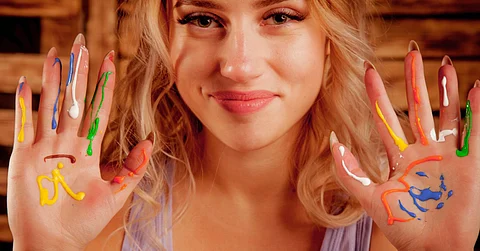
- Home
- About Us
- SOULIVITY TODAY Radio Show!
- COMMUNITY HUB
- GO SHOP by Soulivity!
- ColumnsColumns
- CultureCulture
- Lifestyle
- Contact Us!

You experience colors every day, from the calming blue of clear skies to the invigorating green of your front lawn. Each color sends signals that evoke specific reactions. This is color psychology, an area that examines how different hues affect your perception and behavior. If you’re unfamiliar with the term, here’s everything you need to know about color psychology.
Colors influence your emotions and perceptions. Consider the inviting warmth of a sunny yellow room or the peacefulness of a lush green forest. Cultural contexts also dictate these meanings, with red symbolizing celebration in some countries, while it might mean caution or anger elsewhere.
Colors like orange ignite creativity, whereas blue fosters trust and reassurance. Understanding these associations helps you make informed choices, such as designing a calming workspace with neutral hues or selecting bold colors for occasions that demand energy.
Something you need to know about color psychology is each color’s impact on behavior and emotions. For instance, red signals energy and passion, capturing attention and urging immediate action. Blue, on the other hand, promotes calmness and stability, reminiscent of tranquil oceans.
Yellow evokes happiness and optimism, ideal for spaces where creativity thrives. Green suggests balance and tranquility, perfect for fostering a sense of renewal. Black and white represent sophistication and simplicity, creating a backdrop for elegance. Each color influences your emotions differently, allowing you to use them strategically in daily life.
(VIDEO) SOULIVITY TODAY "Set For Success with Personal Energy Management”
Something you need to know about color psychology is each color’s impact on behavior and emotions. For instance, red signals energy and passion, capturing attention and urging immediate action. Blue, on the other hand, promotes calmness and stability, reminiscent of tranquil oceans.
Yellow evokes happiness and optimism, ideal for spaces where creativity thrives. Green suggests balance and tranquility, perfect for fostering a sense of renewal. Black and white represent sophistication and simplicity, creating a backdrop for elegance. Each color influences your emotions differently, allowing you to use them strategically in daily life.
Businesses cleverly use colors to sway consumer behavior. Think about a well-known fast-food chain’s red and yellow logo designed to stimulate appetite and feelings of comfort. Successful branding generally revolves around color choices that resonate with target audiences.
Digital and physical designs use specific hues to evoke desired reactions. For example, a tech company may use blue to convey trust and reliability. Color selection becomes a powerful marketing tool, influencing decisions and shaping perceptions.
You can apply color psychology to different areas of your life, like when designing your closet by incorporating specific hues to match your desired mood. You may introduce neutral tones for a calm wardrobe experience or bright colors for an energized space.
Colors improve mood and productivity in home decor. A green accent wall might foster relaxation, while a yellow kitchen could encourage cheerful mornings. Even in personal projects, choosing colors thoughtfully can enhance creativity and focus. For instance, incorporating purple can inspire imagination and innovation If you’re working on a vision board or planning a project.
Selecting appropriate colors means aligning them with desired outcomes. Whether crafting an outfit or decorating a space, consider the emotional impact each hue will generate. Striking a balance ensures aesthetic appeal and effectiveness, with complementary colors creating vibrant dynamics and monochromatic schemes offering subtlety. Avoid jarring clashes to maintain harmony. These tactics empower you to wield colors as tools for personal expression and influence.
